The Simpson Desert
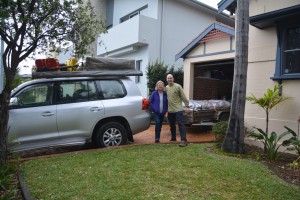
The mighty beast is fully loaded and the trailer is full – we’re ready for our next adventure
A mad idea started to form about two years ago when Julie and I were looking for our next big adventure, something which definitely had to involve exploring more of Australia. We had fond memories of when we led a group of family members driving to the tip of Cape York and we wanted to combine an outback adventure with a big family event. After a nano-second of consideration we knew what was on the top of our list – crossing the Simpson Desert. Come on everyone – let’s do it!
Since that time there has been a lot of discussions, planning, map-studying, weather watching, emailing and dreaming. At one stage it looked like we could have up to ten vehicles and almost 30 people join us – we had created a monster. But as departure time came closer reality sunk in for many people, babies came, jobs got in the way, the usual ebb and flow of life. By the final planning day we had six vehicles and 17 people who were all in – including my adventurous sister and her husband from California. It was a fantastic group of family adventurers, including all our kids, son in law, son’s fiancé and assorted nephews, nieces, girlfriends, sister in laws and other such types. Absolutely fantastic!
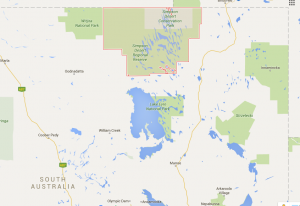
The Simpson Desert straddles the South Australia and Northern Territory border – a vast uninhabited area
So what is the Simpson Desert? They say it is the largest desert in the world with parallel sand dunes, shaped by the winds over the millennia and hardened by the sun. The Simpson is one of the largest in Australia, primarily straddling the boundary between the Northern Territory and South Australia but it also tips into the south-western corner of Queensland. Originally crossed by Europeans in the mid 1800’s, it is regarded as one of the most difficult overland crossings in the country and requires self-supported four wheel drive vehicles with hardy and adaptable travellers.
The key feature of the Simpson Desert for all those to attempt to cross it is the 1,100 sand dunes that need to be negotiated, ranging from five metres high to the largest of the lot – Big Red – which is 40 metres high. We had a schedule of four to five days to make the crossing as part of a 16 day trip beginning and ending in Adelaide. But for Julie and I plus our daughter Anna and her husband Carl the journey was twice as long because we were spending a week driving from Sydney down to Adelaide before the trip and week to drive home after the trip.
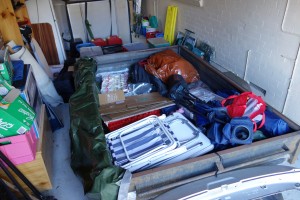
Getting ready for a 4,000 km journey – packing the rusty old box trailer before we left
And to add to the complexity of the trip, I had agreed to pull our old box trailer, with its many years of experience, riddled with rust and suffering dodgy electrics, all the way to Adelaide (and back) filled with everyone else’s camping gear so the rest of the group could hire 4WD trucks from Adelaide and load them up with their own camping gear, rather than hire or buy gear once they arrived in South Australia. I could write a book on the logistics of pulling this off!
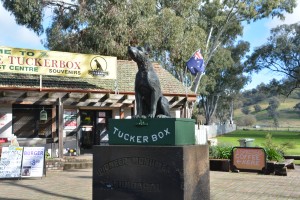
You have to stop at the dog on the tucker box – its a tradition!
The light drizzle didn’t dampen the excitement of the four of us as we drove south out of Sydney and headed off on our big month-long adventure. Like all big trips long in the planning, the day of departure seemed to never arrive and then there was a mad rush to get everything done before we drove out the driveway. Never mind, on our way, maybe 8,000 kilometres ahead of us, almost every night camping, some of the most beautiful and remote country Australia has to offer. What could be better?
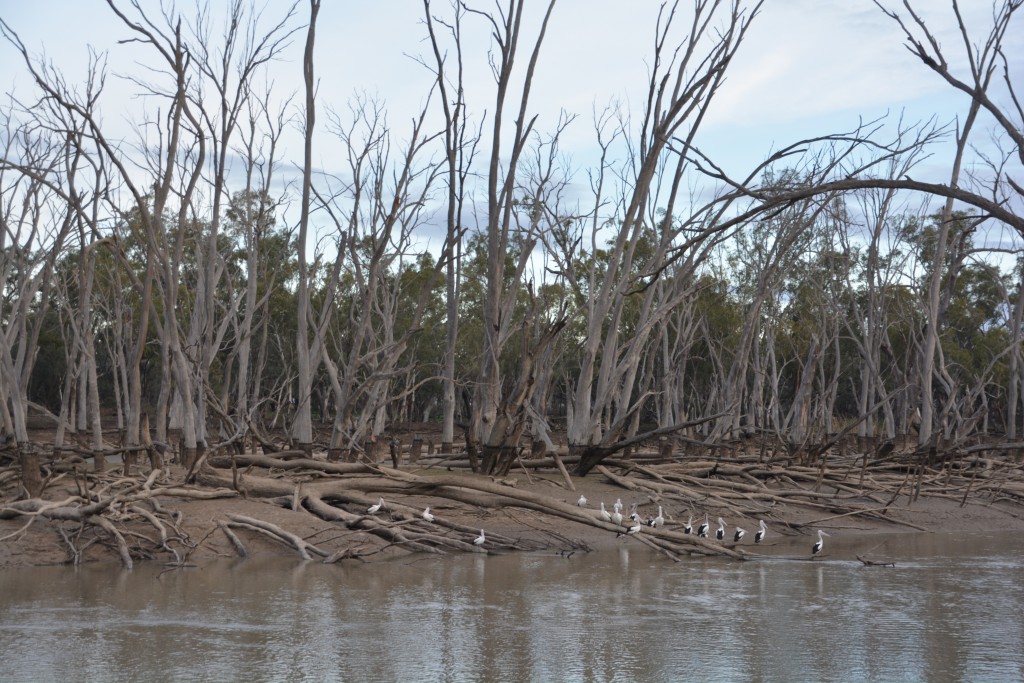
The muddy banks of the Murrumbidgee River marked our first night’s camp – complete with pelicans
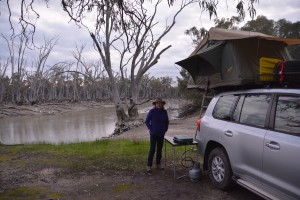
Julie at camp on the first night with our roof top tent excited to be back on the road
The first day was intentionally a long drive, putting serious distance between our home address and our first night’s camp. We passed through some curiously named places like Fairy Hole Creek and the town of Gumly Gumly but the scenery kept us entertained the whole way. By the time we reached the grazing and wheat growing area around the town of Hay it was time to find camp. Via a side road and then an indistinct dirt track we found ourselves a perfect spot on the banks of the beautiful Murrumbidgee River, large drowned trees on its river banks, pelicans patrolling its waters, a perfect first night bush camp. The firewood was damp but the setting was just what we needed to kick-start our trip.
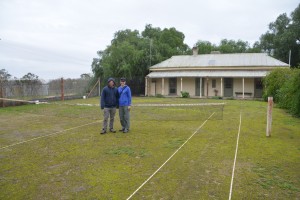
Anna and Carl were keen for a game but we didn’t have time
From there we pushed on to the west across barren flat lifeless plains, mostly covered in endless saltbush but occasionally some fields of wheat. Emus outnumbered kangaroos and there were long distances between settlements. We visited Yango National Park and in particular it’s historic homestead dating back to the 1860’s. What life must have been like at that time in this remote place is hard to imagine but they did sport a well-kept tennis court and enjoyed spacious views of the nearby lake.
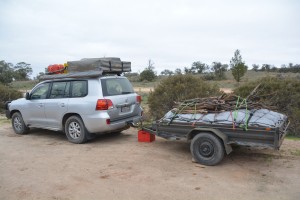
We always had wood for the all important firewood on top of the trailer
We crossed the Murray River and entered Victoria before setting up camp on the banks of one of the pink salt lakes in Murray Sunset National Park. It was a cold grey night kept warm by our fire, the impact of winter camping in the south now fully upon us. But the four of us were on a high, starting our adventure that would include four states and a territory, with many great experiences ahead of us, completely in the groove. Bring it on!
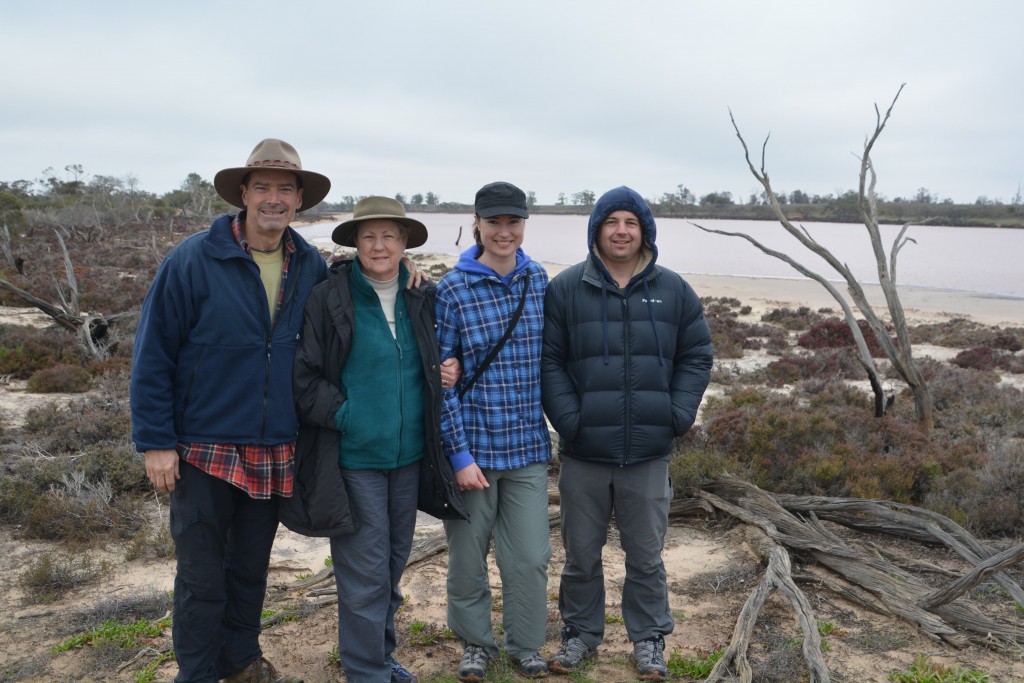
The four of us enjoying a chilly walk around one of the pink lakes in Murray Sunset National Park
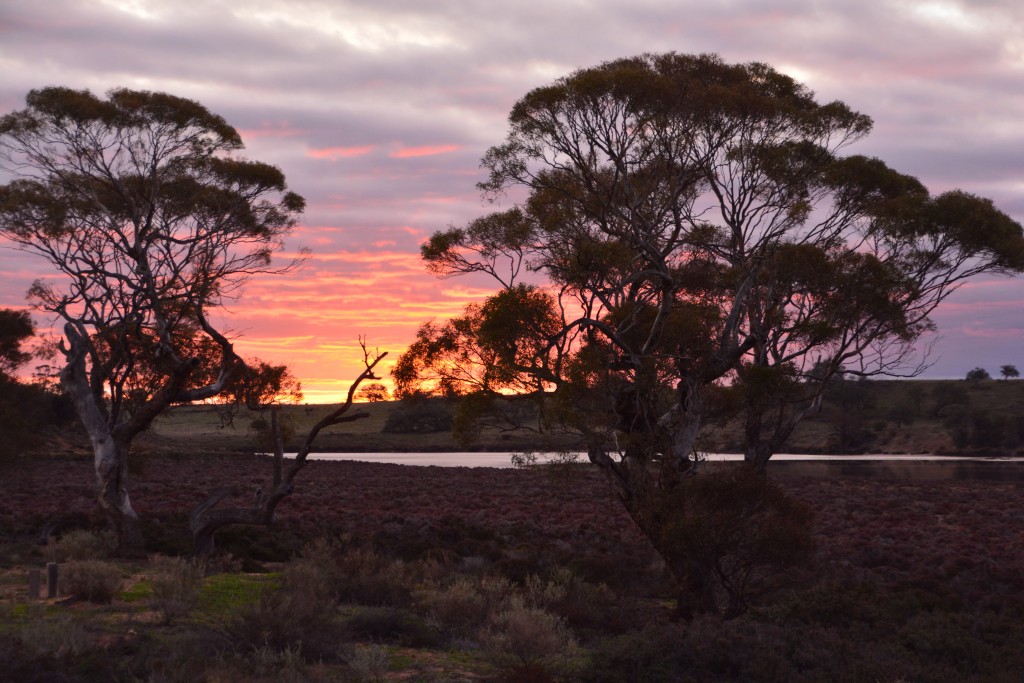
Sunset on our second night – with hopefully many more to come
